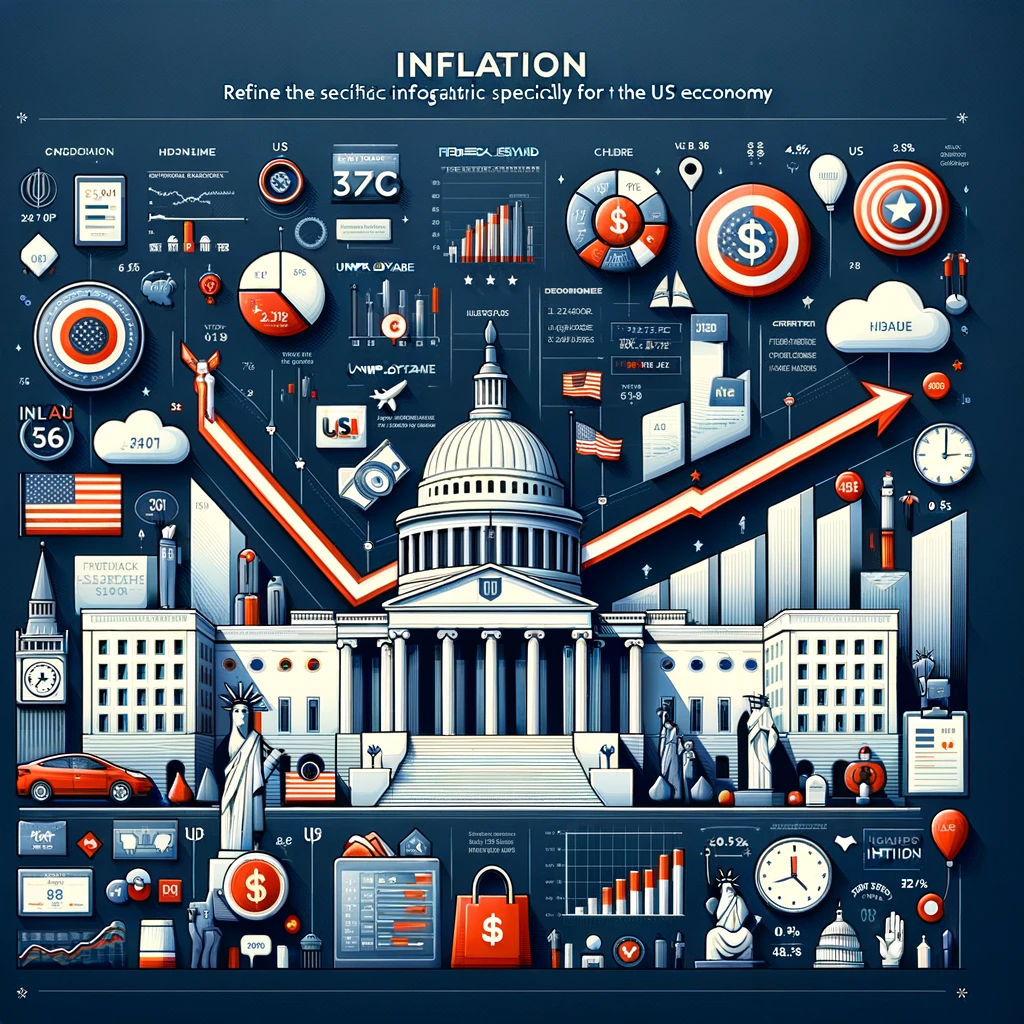Navigating U.S. Inflation: Trends and Expectations
2023-08-07

U.S. CPI Shows Notable Decline from 8.4% to 2.9% Year-Over-Year Change, Signaling Potential Slowdown in Inflation
The latest Consumer Price Index (CPI) data for All Urban Consumers All Items in U.S. City Average shows a notable trend in U.S. inflation. After reaching a peak of 8.4% year-over-year change in July 2022, the CPI has gradually decreased to 2.9% in June 2023. This decrease represents a significant deviation from the previous trend of consistently high inflation rates throughout 2022. The decrease from 8.3% in September 2022 to 2.9% in June 2023 indicates a substantial slowdown in inflation. In a longer-term perspective, the average year-over-year changes in the CPI were relatively low in the years 2018 to 2020, but saw a sharp increase to 4.7% in 2021 and a peak of 8.0% in 2022, before dropping to 4.9% in 2023. This volatility in inflation rates suggests ongoing uncertainty in the economic landscape. The recent decline in inflation could potentially alleviate concerns about overheating and hyperinflation, providing some relief to consumers and businesses. However, it's essential to monitor this trend closely to understand whether it represents a sustained decrease in inflation or a temporary fluctuation.
Sticky Price Consumer Price Index (CPI) Shows Volatility and Potential Shift in U.S. Inflation Expectations
The Sticky Price Consumer Price Index (CPI) tracks goods and services that infrequently change prices, providing insight into future inflation expectations. The latest data from the Federal Reserve Bank of Atlanta reveals significant fluctuations in year-over-year changes, with noteworthy implications for U.S. inflation. The index recorded a steep rise from July 2022 to August 2022, reaching 152.7%, indicating a rapid increase in sticky prices. However, the index experienced a sharp reversal from October 2022 to June 2023, plummeting to 3.7%. This dramatic decline signifies a notable deceleration in sticky prices, potentially indicating a shift in inflation expectations. Comparing these findings to historical averages, the extraordinary surge in 2022, reaching 130.2%, followed by the subsequent decrease to 36.3% in 2023, is particularly striking. This turbulent behavior suggests a period of volatility and uncertainty in the U.S. economy, raising concerns about the potential long-term impact on inflation.
Fluctuations in Median Expected Price Changes Over 12 Months Highlight the Importance of Monitoring Inflation Expectations
The University of Michigan's Surveys of Consumers provide valuable insights into inflation expectations, with the latest data showing the following median expected price changes over the next 12 months: 4.8% in August 2022, 4.7% in September 2022, 5.0% in October 2022, 4.9% in November 2022, 4.4% in December 2022, 3.9% in January 2023, 4.1% in February 2023, 3.6% in March 2023, 4.6% in April 2023, 4.2% in May 2023, 3.3% in June 2023, and 3.4% in July 2023. It's clear that there have been fluctuations in the median expected price changes over the months. The peak of 5.0% in October 2022 was followed by a slight decrease to 4.9% in November, and a more notable drop to 4.4% in December. However, a more significant shift occurred from December 2022 to January 2023, with a decrease to 3.9%, indicating a notable decline in inflation expectations. Despite a slight uptick to 4.1% in February, the trend continued downwards in March to 3.6%. April saw a temporary rebound to 4.6%, but by May, the median expected price change had reduced to 4.2%. The most notable deviation occurred in June 2023, with a substantial drop in median expected price change to 3.3%, which was followed by a modest increase to 3.4% in July 2023. These fluctuations in inflation expectations are essential to monitor as they can influence consumer behavior, wage negotiations, and investment decisions. The decreasing trend from December 2022 to July 2023 could indicate a moderation in inflation expectations, potentially influenced by factors such as central bank policies, energy prices, and supply chain disruptions. However, the temporary upticks in April and July 2023 suggest that inflation expectations remain sensitive to ongoing economic dynamics. It's crucial to continue observing these changes to gauge their impact on actual inflation and the broader economy.
February 2024 Breakeven Inflation Rate Data Revealed: 5-Year, 10-Year, and 30-Year Rates Stand at 2.35%, 2.3%, and 2.27% Respectively
The latest monthly data on the Breakeven Inflation Rate, as provided by the Federal Reserve Bank of St. Louis for February 2024, reveals the following rates: 2.35% for the 5-Year period, 2.3% for the 10-Year period, and 2.27% for the 30-Year period. The breakeven inflation rate essentially reflects the market's expectation of future inflation, calculated from the difference in yield between Treasury Constant Maturity Securities and Treasury Inflation-Indexed Constant Maturity Securities. These figures are crucial indicators for investors and policymakers to gauge inflation expectations and make informed decisions. It's worth noting that fluctuations in these rates can have significant implications for various financial instruments, making it essential to closely monitor these metrics for broader economic analysis and forecasting. So, while these numbers may seem dry at first glance, they hold substantial weight in the world of finance and economics.
July 2023 Expected Inflation Rates Show Moderate but Consistent Outlook Across Time Horizons
The latest monthly data on expected inflation, as estimated by the Federal Reserve Bank of Cleveland, reveals the following rates for July 2023: 1-Year: 2.47%, 2-Year: 2.28%, 5-Year: 2.08%, and 10-Year: 2.06%. These figures are derived from a model that incorporates Treasury yields, inflation data, inflation swaps, and survey-based measures of inflation expectations. The data suggests a relatively moderate but consistent expected inflation across different time horizons. The 1-year expected inflation rate is slightly higher compared to the 2-year rate, reflecting a mild increase over the short term. Additionally, the 5-year and 10-year expected inflation rates remain close to each other, indicating a relatively stable longer-term outlook. Overall, these figures provide valuable insights for economic forecasters, policymakers, and market participants in assessing inflation expectations and making informed decisions.
